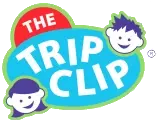

|
Gaby's Visual Supports |
Visual Support: Behavioral Interventions -- by Sarah, Gaby's mom It was really hard for Gaby to dial down her usual/preferred behaviors in order to be appropriate for the general ed classroom. As usual, visual supports were a key strategy to help her successfully control her behavior. First, we made sure that she clearly understood the behavioral expectations by providing her with a short list of the desired behaviors. You can't follow the rules when you don't know what they are and as obvious as they may seem to us, they're often not at all apparent to a person with autism. Gaby's list focused on the
things that she typically struggled with. In high school, they were:
When she was struggling, it was good to have a smaller version that we could display discreetly on her desk. Then you could just point to the rule that needed attention without having to address the issue verbally at all. She accepted it better this way (it's not someone telling me what to do, it's just "the rule") and of course it was less disruptive for a classroom setting. 
We also had a list of possible reward choices for good behavior. It was more effective for this to be presented as an illustrated list, both to help her choose and to serve as concrete, visual reminder of the fun things to come if she follows the rules in the classroom. Especially in elementary school, it was often really hard for her to control her behavior. She really needed that visual reference right in front of her to help her get through an activity that perhaps wasn't so appealing. However, Gaby couldn't easily wait through an entire class period to get her reward. She needed more frequent positive reinforcement but at the same time we didn't want to be constantly taking breaks from classroom activities (and missing instruction) so that she could have her reward activity. So instead, we made a chart that broke down the class period into 15 minute increments and if her behavior was appropriate, we drew a happy face in the box. If she got enough happy faces, she earned her reward for that class period and she could have it at the end of class. So right on her desk where she could see it throughout class was a mini chart that had the spaces for the happy faces, the selected reward, and at the bottom the required number of happy faces to receive the reward (since class periods were usually about the same length, this was always the same number and was written: 3 ☺ = reward).

We also found it very useful to use a Time timer during reward time. It's a more concrete representation of the passage of time and Gaby was much better prepared for the transition back to class work when we used it. We have been using Pink and Yellow Cards in conjunction with Gaby's reward systems since grade school and still use it today. In grade school, she had 1 more yellow card and each card only took away one privilege instead of two. Also, in grade school the only behavior we were targeting was "angry touches". We have upped the ante since then. If Gaby had a good day (which was most of the time), the pink card went home in her backpack. If she committed a behavioral infraction listed on the cards, she got a yellow card and lost a privilege for that evening. If she had a second infraction on the same day, she got a second yellow card and lost a second privilege, etc. We tried to display this prominently, yet discretely, at her desk to remind her that impulse control is a good thing . If she got a yellow card, we commiserated with her about how upsetting it was not to be able to watch the video she had borrowed from the library or to miss her favorite t.v. program, but we always enforced the consequences. Until we instituted this system, we had a miserable time in the general ed classroom. The average elementary school classroom is extremely visually stimulating which is usually a huge distraction for kids with autism, not to mention a major challenge to their impulse control - and nagging/yelling at her about her behavior was, frankly, worse than useless. However, a behavioral system that included visual supports made a huge difference and allowed Gaby to participate in inclusive settings. |

|
| The Trip Clip® - Morning Routine, Bedtime Routine, After School Checklist, Chore Chart, Picture Grocery List, Mazes, Car Bingo, Travel Activities, & More | |
| Reviews | Product Safety | Privacy Policy | Terms of Service | Return Policy | Help | Contact Me Copyright 2009-2024 I Spy a Family, LLC, doing business as TheTripClip.com. All rights reserved. | |




|
|